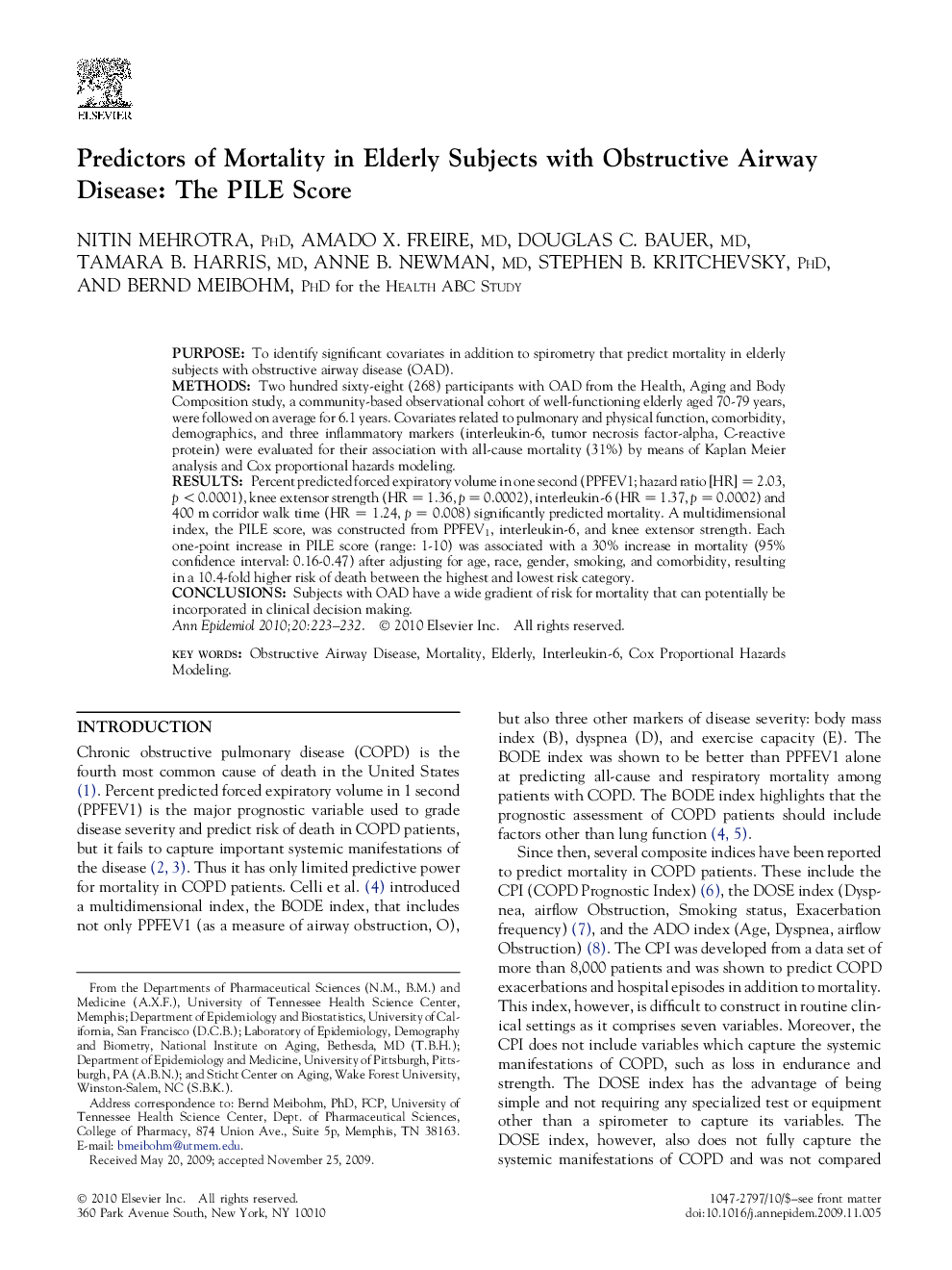| Article ID | Journal | Published Year | Pages | File Type |
|---|---|---|---|---|
| 3444802 | Annals of Epidemiology | 2010 | 10 Pages |
PurposeTo identify significant covariates in addition to spirometry that predict mortality in elderly subjects with obstructive airway disease (OAD).MethodsTwo hundred sixty-eight (268) participants with OAD from the Health, Aging and Body Composition study, a community-based observational cohort of well-functioning elderly aged 70-79 years, were followed on average for 6.1 years. Covariates related to pulmonary and physical function, comorbidity, demographics, and three inflammatory markers (interleukin-6, tumor necrosis factor-alpha, C-reactive protein) were evaluated for their association with all-cause mortality (31%) by means of Kaplan Meier analysis and Cox proportional hazards modeling.ResultsPercent predicted forced expiratory volume in one second (PPFEV1; hazard ratio [HR] = 2.03, p < 0.0001), knee extensor strength (HR = 1.36, p = 0.0002), interleukin-6 (HR = 1.37, p = 0.0002) and 400 m corridor walk time (HR = 1.24, p = 0.008) significantly predicted mortality. A multidimensional index, the PILE score, was constructed from PPFEV1, interleukin-6, and knee extensor strength. Each one-point increase in PILE score (range: 1-10) was associated with a 30% increase in mortality (95% confidence interval: 0.16-0.47) after adjusting for age, race, gender, smoking, and comorbidity, resulting in a 10.4-fold higher risk of death between the highest and lowest risk category.ConclusionsSubjects with OAD have a wide gradient of risk for mortality that can potentially be incorporated in clinical decision making.
